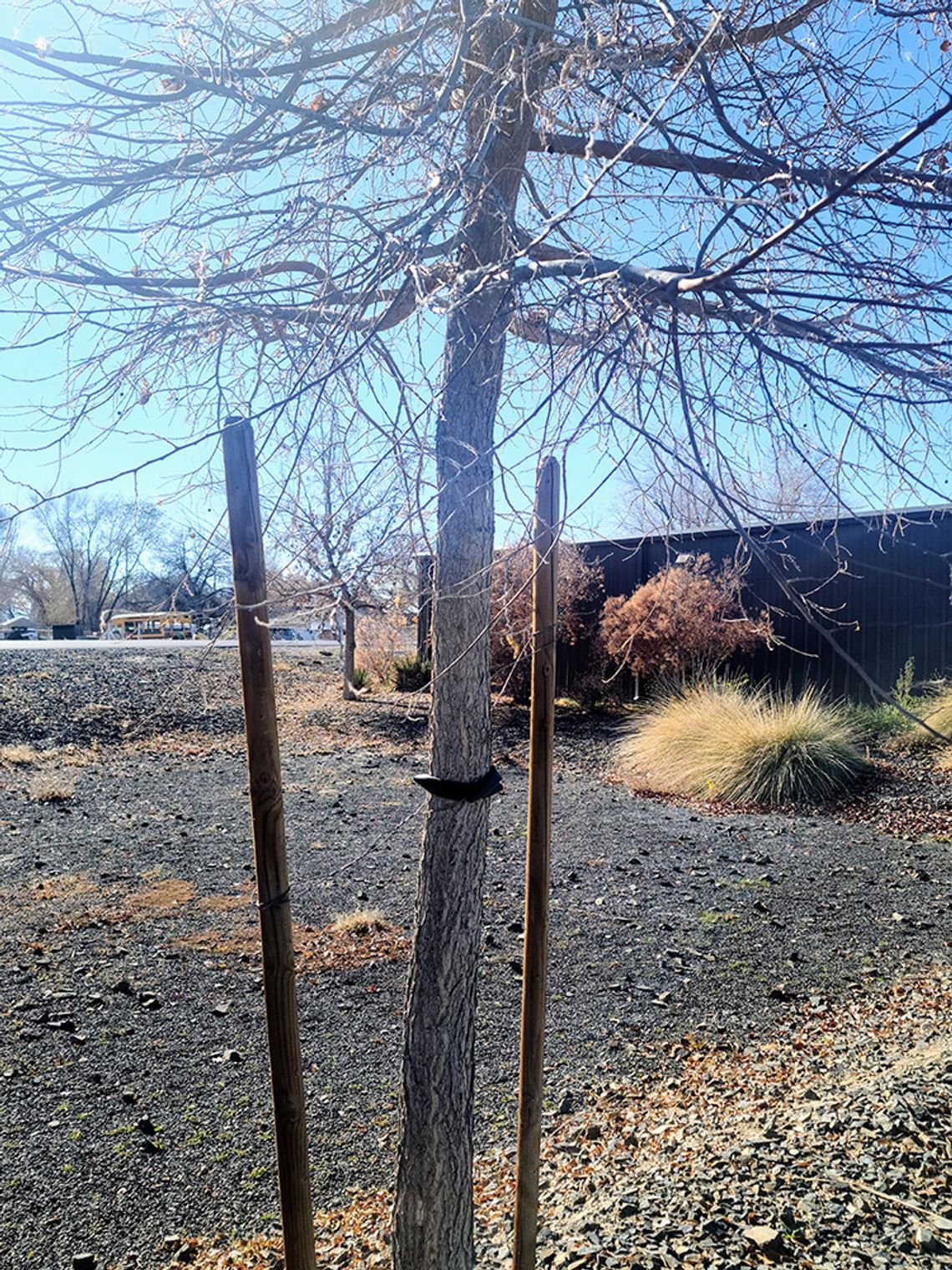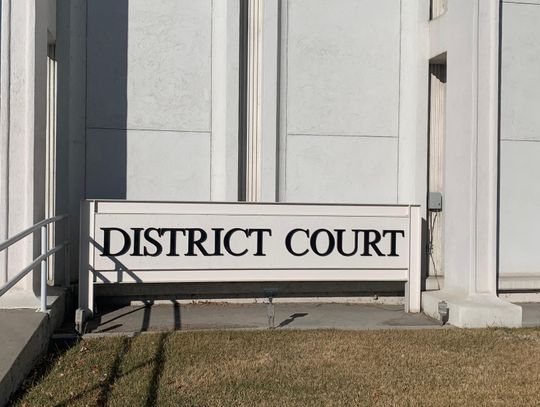Can’t call it the Raven’s Rant without an occasional rant. So here goes, you pay good money when you purchase a tree to plant in your yard. A 15-gallon tree these days goes for a ballpark of $90-plus dollars. You have to dig a big hole when you get home or pay someone to do it. I have yet to figure out why homeowners put forth that effort and then just walk by their trees every day when stake ties are digging in and girdling the trunk of their trees. Trees are an investment in your property, mature trees, especially in this area, add value to your home, to your neighborhood, and to our town. Driving around this morning in the neighborhood of beautiful, new houses near the museum I was shocked as I passed house after house with recently planted, really badly staked trees.
Hopefully when you purchased your new tree, whoever sold it to you suggested some soil amendment and some stakes. They weren’t just trying to upsell you. I should say first, not all new plantings need staking. For example, a 15-gallon sturdy, blue spruce with a thick trunk that would be planted in a fenced yard in town probably doesn’t need extra support. However, our windy spring and early summer gusty days are a major factor to consider. If you purchase say, a weaker wooded, thin trunked purple robe locust and live out on the outskirts of the desert please keep reading. I would also recommend staking new trees that are very tall or top-heavy with a hefty canopy like a sycamore or fruitless mulberry. If your soil is very sandy, consider stakes when you plant as well. The root ball can move around much more in the lighter soils. Better to provide a little support until the roots are out and established.
Extra support to the tree topside via stakes, gives the tree a little extra energy to use to develop thicker trunks and establish healthy, stronger roots. Trees grown in containers, especially deciduous ones usually come rigidly staked and are tied much too tightly. Growers know consumers want straight, upright trees so they prune, stake and tie rows of densely packed trees in order to get just that. In your yard, a tree must move around a bit in order to develop naturally. The wind and easy breezes are great for doing just that.
When you are planting your new tree immediately remove the bamboo stake and plastic green tape that is usually attached to the truck. On the outside of your tree circle that you dug at least two times wide as your original container, use at least two sturdy stakes. T-posts work well. That thin bamboo stake you initially removed should be used for another garden project. Our winds are usually prevailing west. We stake here on our farm on both the west side and east. Pro-tip, look for the graft if there is one at the base of the tree, turn it opposite the sun for added protection. Tie off to the stakes, figure eights work well. Know that wire or heavy rope can damage your tree bark. Check your ties regularly. If you can choose a wide flexible material, cloth or even pantyhose can work. I know they might be unsightly, but a half-dead unhealthy tree might also be called unsightly. Some folks use wire ties but use an old garden hose piece of plastic tubing for the part in contact with the tree. Check your work by lightly moving your trunk, it should be able to move several inches in any direction. Guying is another method of staking used in larger trees. Often the ones that come in 25-gallon plus containers or balled and burlapped trees. You use much shorter stakes, about the size you would use to stake a vampire. All kidding aside, usually 3 or 4 shorter stakes are tied and anchored in a bit more downward fashion.
The other super important thing about staking is do not leave them in longer than a year. You do not want your tree to become dependent on the stakes or have some crazy lady in a truck driving by and staring at your trees.








Comment
Comments